Phineas Gage Book Trailer
Google Lens: Handwriting Scan + Copy to Docs using Smartphone
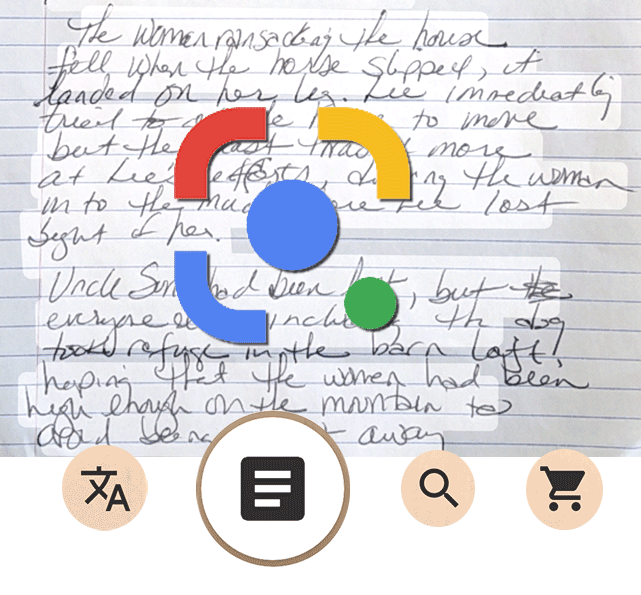
When I’m working on a new book, I handwrite most of it. Once it’s time to digitize, typing becomes a chore, especially since my typing accuracy isn’t great. Google’s new Lens app feature may streamline that process.
According to the online hype, you can scan your handwriting and send it directly to Google docs on your desktop computer.
Unfortunately, it didn’t work as the promotions claim. Since I wasn’t willing to spend time troubleshooting the syncing snafu, I found a work-around to do the entire process on the smartphone.
Smartphone Skills Needed
Open multiple apps and switch between them
Steady grip for Google Lens scanning
Copying & pasting
Apps Needed
Google Docs accessible on your smartphone
Google Lens App on your smartphone
Ten Steps to Scan Your Handwritingng to Google Docs using Your Smartphone
- Open Google Lens
- Click on “Scan Text” button

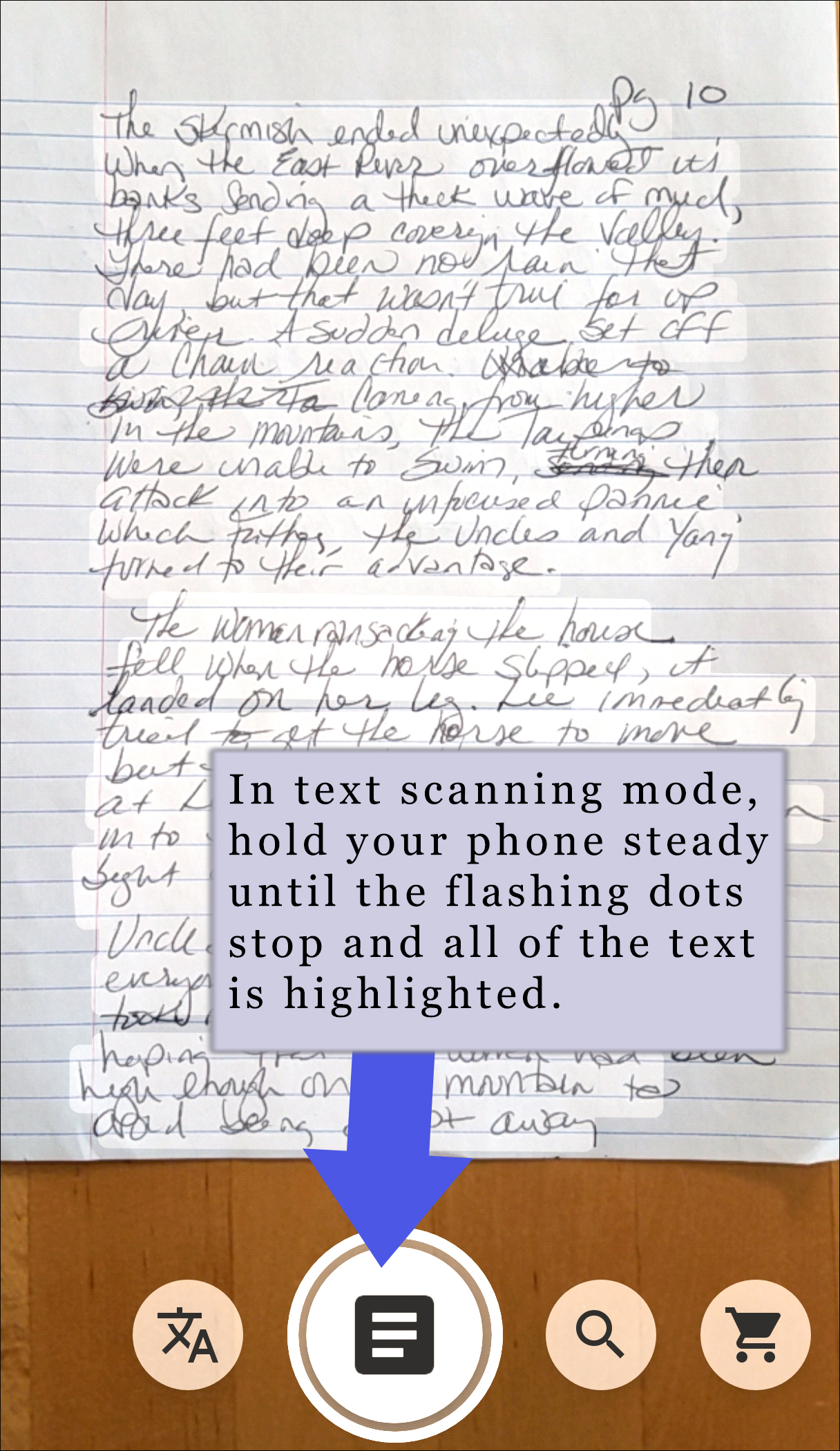
3. Hold the camera steady while Lens analyzes the text. (*If it takes longer than three seconds for the text to be highlighted, move the camera slightly closer or farther away until it ‘catches’ it.)
4. Tap anywhere within the highlighted text to bring up the copy tool.
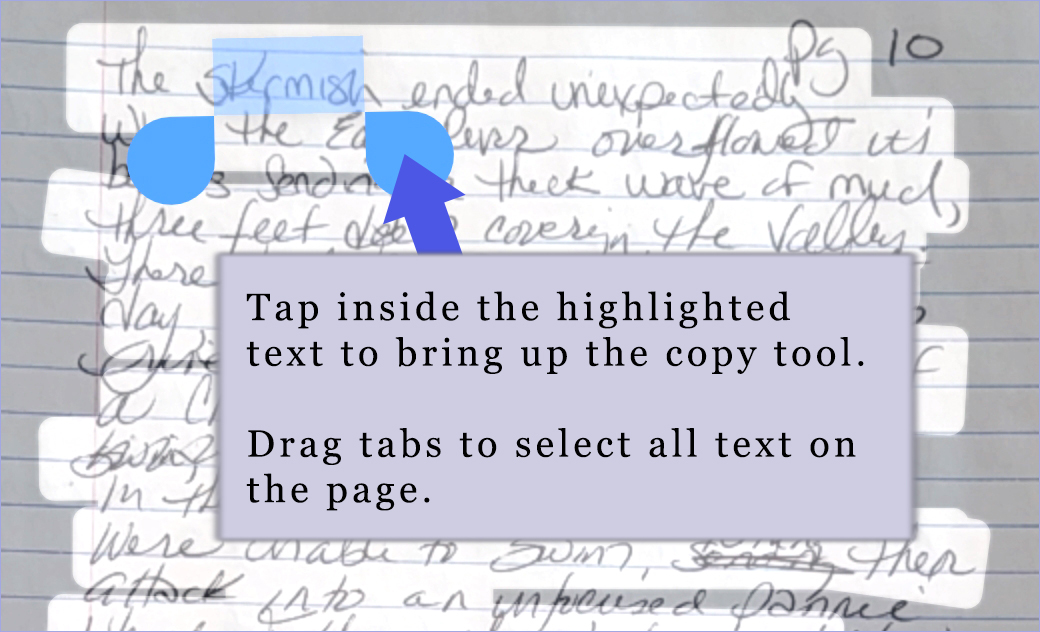
5. Drag copy handles to include all the text on the page.
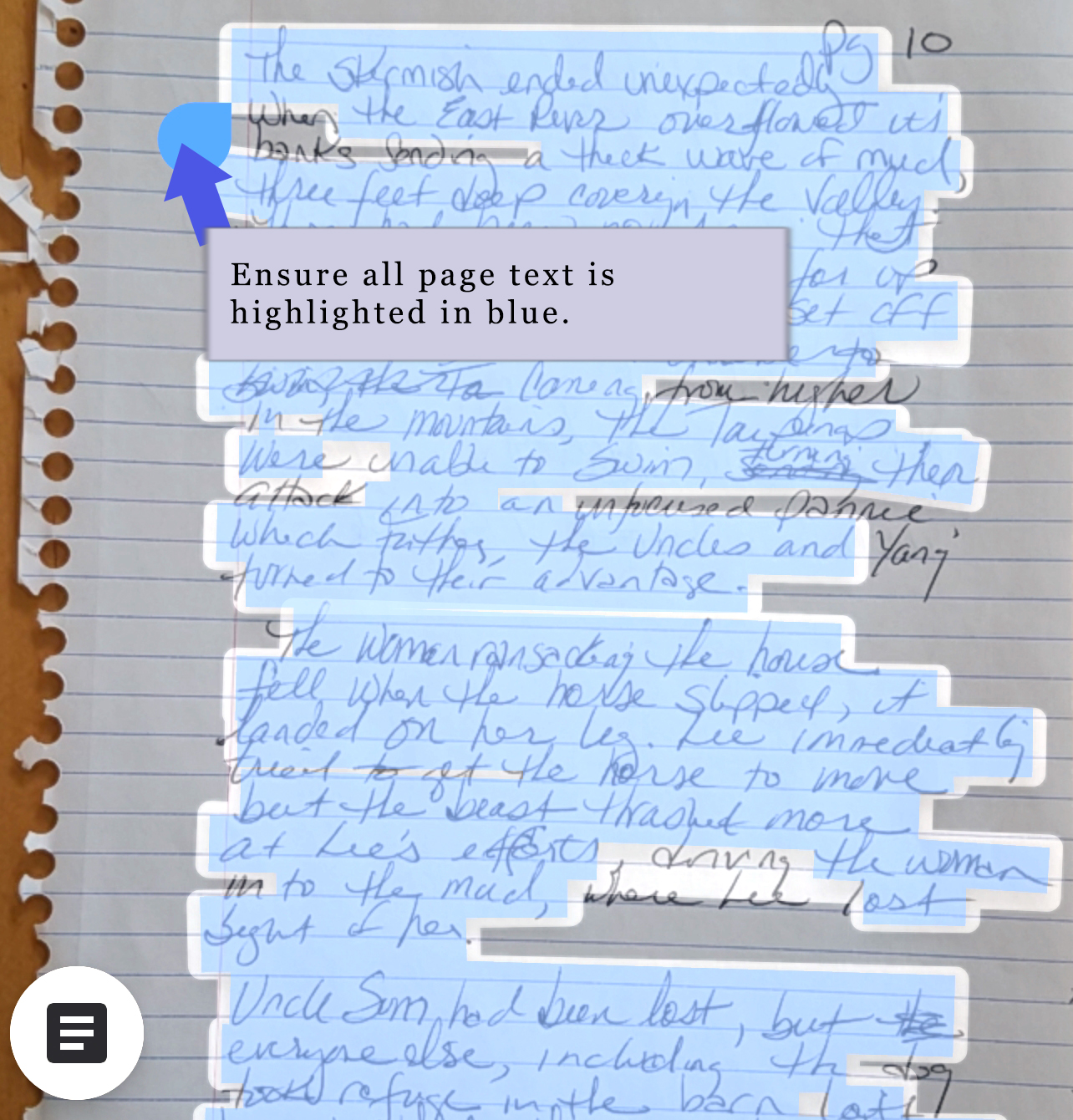
6. At the bottom of this screen, tap “Copy text,” then make sure the ‘Copied to clipboard’ bar pops up.
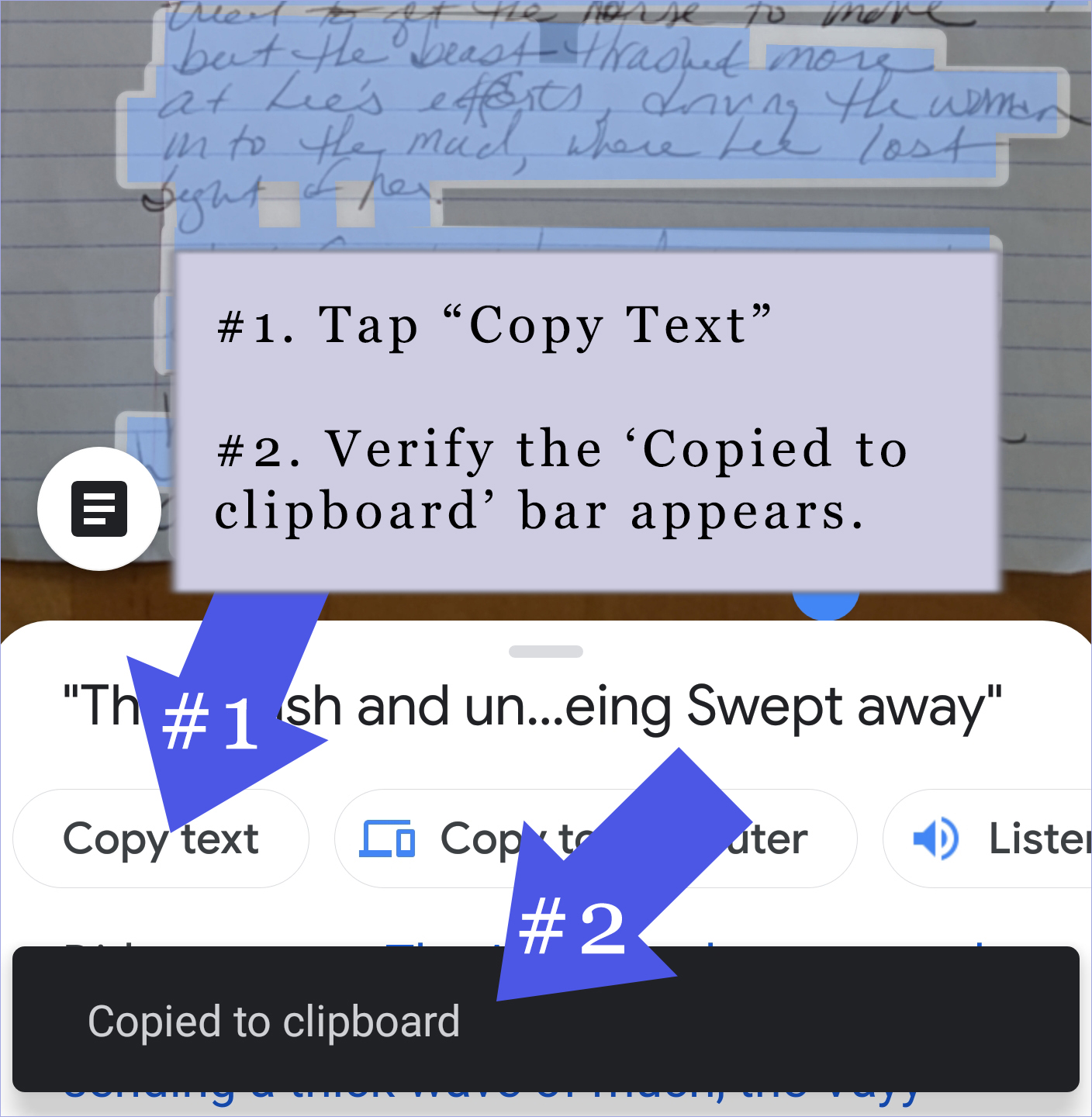
7. Switch over to Google docs.
8. Open the document you wish to paste text into, making sure it is in editing mode.

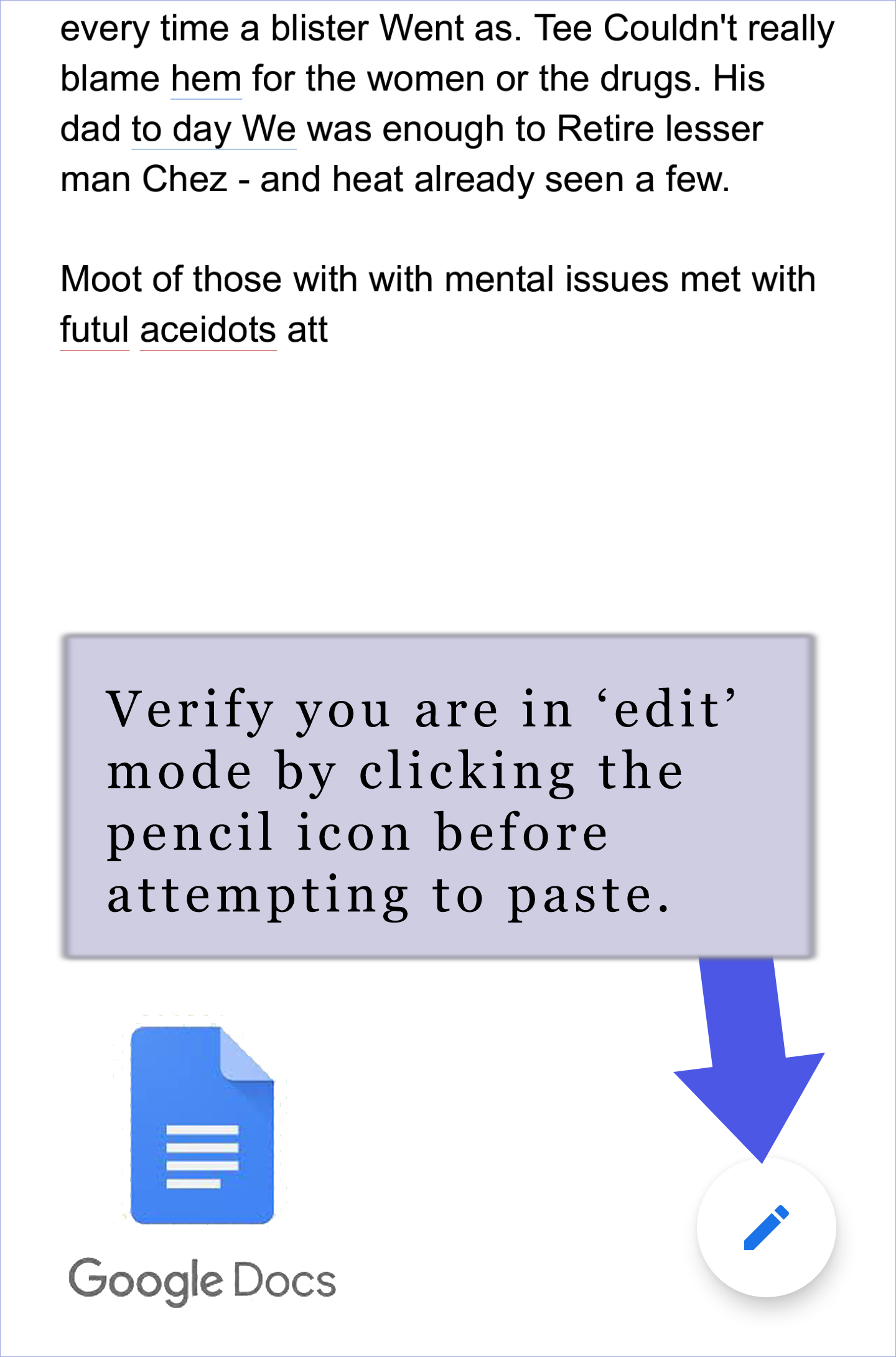
9. Hit paste.
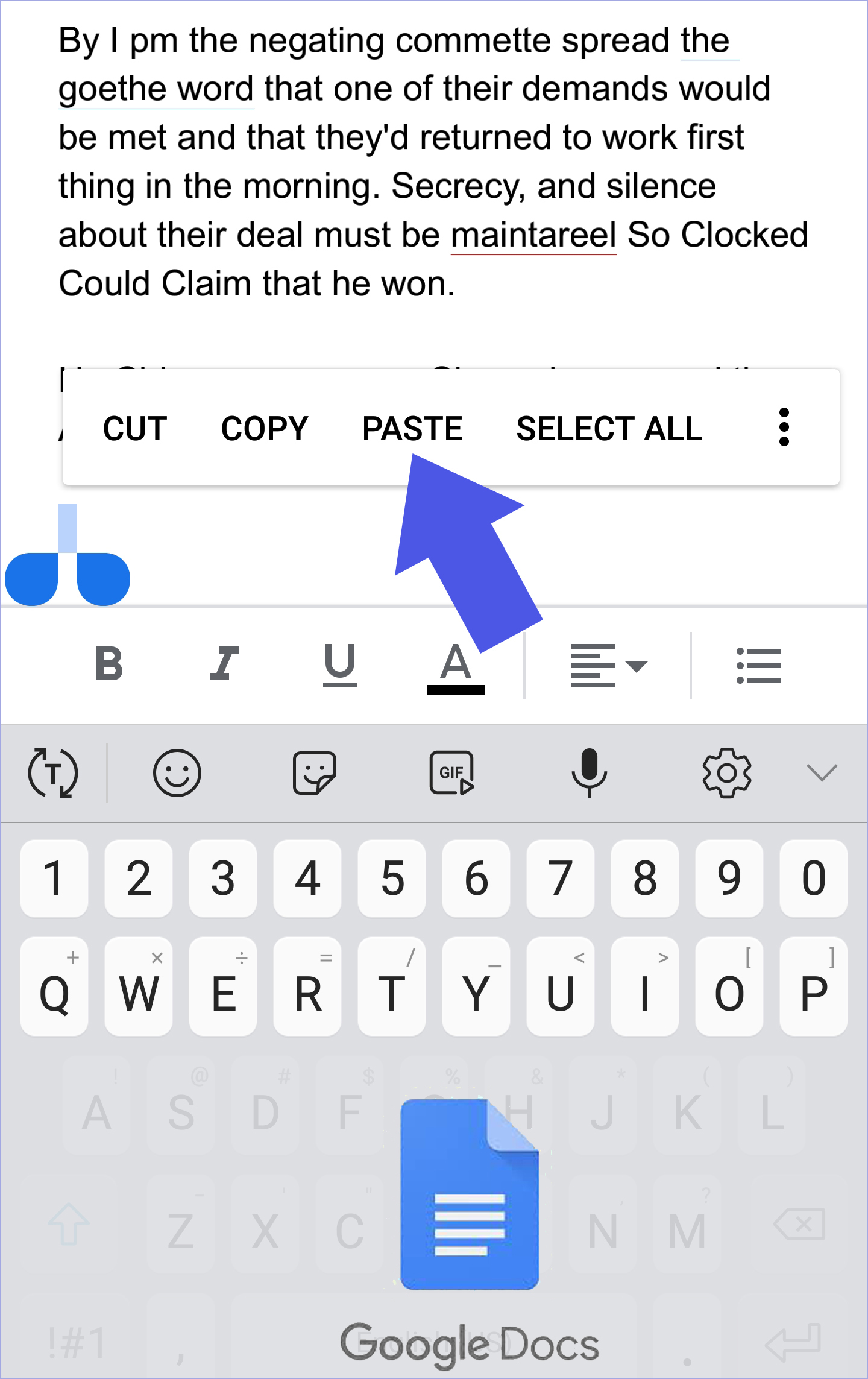
10. Mark the pages after scanning to keep track of where you last left off.

As with OCR scanning, Google Lens handwriting scans aren’t perfect. (The text in the above examples are exactly as they came out of the scanner.) You’ll still need to compare the original to the scan to correct the imperfections.
But if you’re like me and your typing isn’t perfect either, the scan corrections may be more efficient than if you’d manually typed your handwriting.
Instagram Post and Comment Edit How-To
Step-by-step instructions to edit Instagram posts and comments.
In the PC/Android world, there are some Instagram activities you can do on your stand-alone computer and some exclusive to your smartphone.
Box = Stand-alone computer/laptop
Phone = Smartphone
Use your phone to make Instagram post edits
- Click on the post you wish to edit.
- Click on the three dots in the upper right corner.
Edit a Post
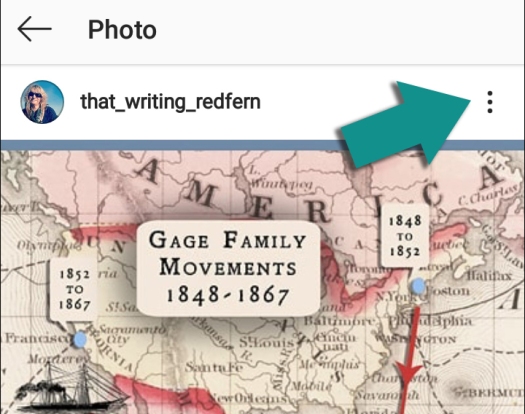
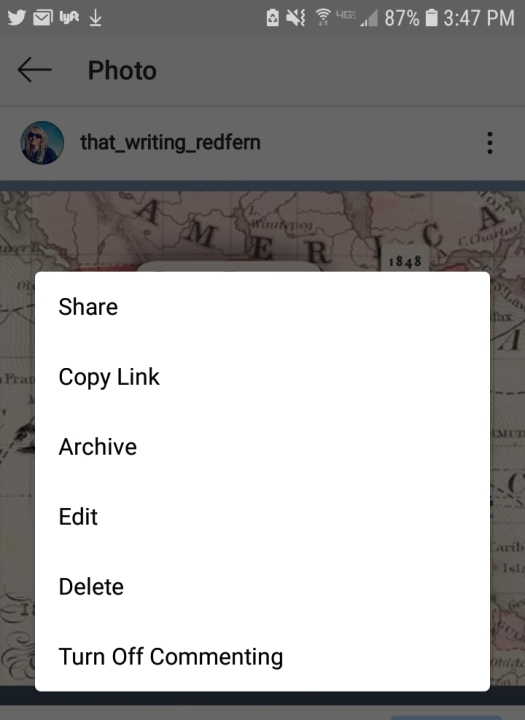
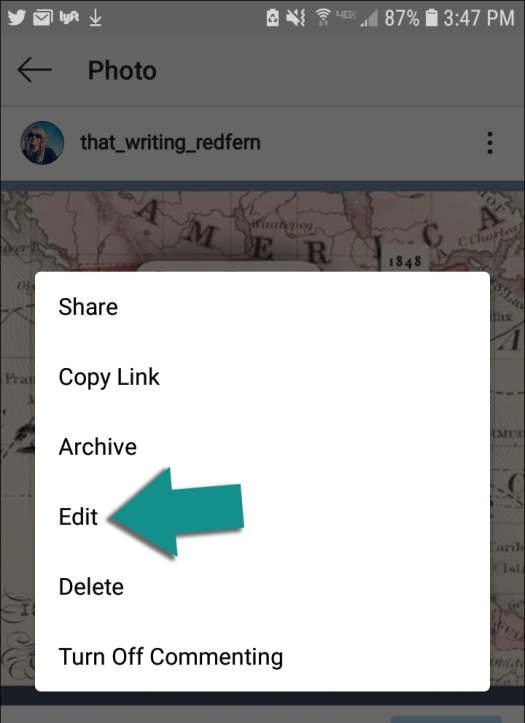
Delete a Comment
Use your smartphone
- Tap and hold the comment bubble.
- Navigate/scroll down to the post you wish to delete.
- Tap and hold an area with no text until it turns blue.
- Once the blue screen appears, a trash can icon will show in the upper right corner. Click on that.
Edit a Comment
Use box + smartphone
- On your box, copy the comment you plan to edit.
- On your phone, tap and hold the comment bubble.
- Navigate/scroll down to the post you wish to edit.
- Tap and hold an area with no text until it turns blue.
- Once the blue screen appears, a trash can icon will show in the upper right corner. Click on that.
- Return to your box, click on the comment bubble and paste the text from your clipboard. Make edits/changes, then hit enter.
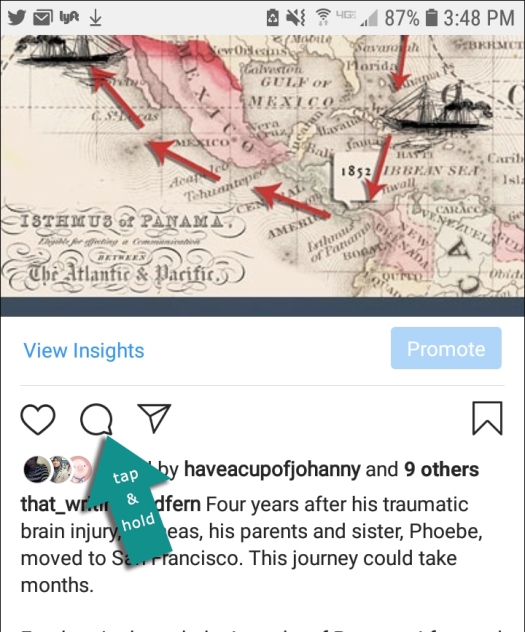
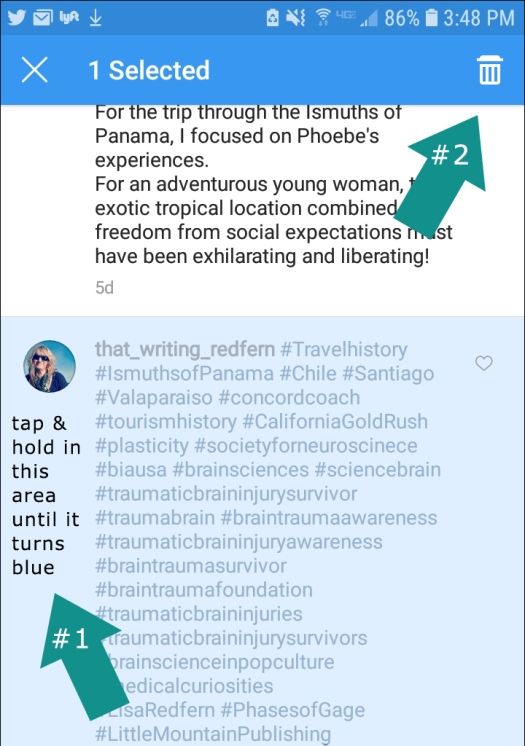
Editing Post during a Promotion
While a promotion is in progress, editing functions are blocked.
However, edits can be made when the promotion is paused.
Once edits/changes are complete, the promotion can be unpaused.
If you liked this post, you may also like Exterminating Breeding Typos
Exterminating Breeding Typos – Guest Post – Randy L. Scott

Randy Scott is an independent author I’ve enjoyed visiting with at both Sierra Writers meetings and at the 2019 Sierra Writers Conference.
Randy’s guest post shares his editing process, tools, techniques, and tenacity. Randy has written and independently published three contemporary action adventure novels.
Knowing that Indies have a reputation for producing typo-riddled work, Randy’s aim is to raise reader expectations.
______
I’ve read the blog posts, listened to the podcasts and watched YouTube about the business of writing and publishing.
One of the consistent complaints readers have about many self-published books is the editing – or lack of.
My day job is in a hospital, in a department where many ‘out-patients’ are seen. There is a waiting room where, you guessed it – they wait. Whenever possible, I engage with these folks about their reading material choices. When I ask if they read self-published or independent authors, the overwhelming response is they avoid them. “After the fifth or sixth typo, I put the book down and don’t go back,” is a common reply.
Tracking Down Typos
I consider myself a typical consumer of books; well-read across genres. Nearly every traditionally published novel I’ve read over the past dozen years, even from famous authors, has a few mistakes.
My typo standard; a few is okay, a dozen is sloppy.
When I embarked on my self-publishing journey, I knew that we are blind to our own mistakes and professional editing is mandatory for a professional result.
I ran the manuscripts through ProWriting Aid, the grammar checker on steroids. After line-correcting the manuscripts, I sent them to a professional proofreader for final nit-picking. I felt confident that the proofreader would have an easy job.
In my disillusionment, I thought I would be paying a lot of money to root out the few typos that escaped the eyes of my line editor.
Turns out the proofreaders earned their pay – and then some. They returned my manuscript with shit-tons of red flags. Well… okay… I drop my head, swallow my pride and get back to work making those corrections. Finally, it’s completely cleaned up and I make the ebook available for free to my friends and followers on Facebook.
Here’s what happened; the feedback is good. I’m a happy camper. I submit the manuscript to Amazon for both Kindle and paperback versions. I also submitted it to Draft2Digital, who will distribute to the other ebook stores like Apple Books, Nook, Kobo, Scribd and more. Yippie, it’s out there in the world and I’m a published author! Life is good my friends.
Then the comments rolled in from those who received the paperback copy; ‘I found a few typos and transposed words. Do you want me to pass them on to you?’
‘Yes, please!’ I reply to all. I also asked those friends who had the paperback to ‘mark up the book, dog-ear the pages where the typos are, pass it back and I’ll give you a new, clean version when I’ve made the corrections.’
Holy Cripes! I’m shocked. Shocked, I say, when I see all the dog-eared pages. I was hoping and praying they are mistaken or merely quibbling over style and word choices.
It’s a sad day when I see they are right and I’ve still got a couple dozen errors in my one-hundred thousand word manuscript.
Little ones, mind you, but mistakes nonetheless.
Amazon Book Proofs for Proofreading
Amazon offers ‘Author’s Proof’ copies. I give those ‘cheap’ copies to my second volunteer team. Within a week, they are ready to return them – all dog-eared and marked up. I’m happy to buy them lunch, or a bottle of wine to thank them for their ‘volunteer’ help.
It’s a chore to find a good team of professional editors – that you can afford. It’s a chore to find qualified friends or acquaintances who will take that last step for quality, to read your work and mark it up – after you’ve already paid the pros. For me, it’s worth it. I put a lot of thought and time into my stories.
I don’t want to be an author who has reviews noting how poor editing was distracting to the story.
Jumping the Gun, Impatience has a Price
Now I can hear you saying; “But you paid a ‘professional’ proofreader. Shouldn’t they have found all those mistakes?”
Yes. I agree. I wish they would have.
I discovered that one of the drawbacks of self-publishing; not having a large team of seasoned editors.
It’s up to all of us who are self-publishing, to go the extra steps and pay the extra dollars to get the job done right.
I paid for all the stages of editing, but I was in too much of a hurry on those first two books. I’m fortunate to have local friends good at finding typos, and an aunt who tackles proofreading like a rat terrier on a mission from God.
Post-Publication Changes
Thank God for print-on-demand, I don’t have a basement full of my poorly edited novels, and thank God only a few people have bought the books at this point.
My saving grace— it is easy to make changes today – even after publication.
I did a ‘soft’ launch, choosing to wait until I have the whole series complete and out the door before investing advertising. In retrospect, that was a wise move.
I zip through the dog-eared pages to find the circles and arrows pointing to the misspellings or transposed words while I am scrolling through the manuscript on my computer. I make all the corrections within half an hour and reload the manuscript into my formatting program, Vellum. New files are spit out for the paperback, and the ebook versions for Kindle, iBooks, Nook, etc.
It takes only a moment to log into Draft2Digtial. I delete the old version, no questions asked, and the next person who orders my ebook, gets the new, cleaned-up version. Easy peasy.
The only delay is with Amazon. They have to review the new manuscript first. The Kindle version is typically replaced the same day. The paperback, print-on-demand copy can take up to seventy-two hours to be replaced.
Taking Extra Steps to do the Job Right
As I write this article, two of my three novels are finally, completely finished and published. I learned that I put them on the market one step too soon.
I needed another proofreading team after I paid the professionals, to give the books a final good scrubbing.
On this last book, my final volunteers discovered typos that got past the pro! Here’s my estimate of what they found;
- 1st guy found about 30
- 2nd person found about 20, 10-15 unique ones the first guy didn’t find
- 3rd person found about 10, 5 unique ones the other two didn’t find
And I found a few more while I was putting in their corrections! It’s like the little bastards breed as soon as you close a file!
My diligence is paying off.
Finally, on the third book I’m getting it right.
At the time of article publication, all three Dream Messiah books will be available for purchase on Amazon
Summary of Randy’s Editing Process
- Developmental Editor (paid)
- Volunteer Beta readers
- Line Editor (paid)
- Proofreader (paid)
- Volunteer proofreaders

Check out Randy’s Dream Messiah Series
The genesis for the Dream Messiah saga came while Randy hiked across Arizona’s Superstition Mountains. In his head, he saw the story of a young Alaskan man being taken into the Dreamtime of another culture and finding his home.
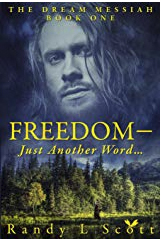
FREEDOM: Jake Barnes is worried about his ‘crazy seeds,’ mental afflictions and psychotic episodes that run in his family. After burning bridges and making enemies, he hitchhikes to Alaska to build his dream–a cabin in the wilderness where his biggest fear is the grizzly bear stalking him.
Jake…..turned mountain man falls for Kat, a strong-willed woman who is going to be the mother of his child. Jake soon learns that escape from the difficulties he ran from is impossible.
After their child is born, Kat has her own agenda.
Jake falls into doubt and self-pity while sensing that his life and grasp of reality are spinning out of control.
His sourdough, survivalist neighbor tells Jake of a primitive, nomadic tribe, the Punan Dyaks, on the island of Borneo, with a Dreamtime messiah prophecy. He also advises Jake to take a path of ruthless action.
While more than one person wants Jake Barnes to burn in hell, another hand is guiding him into baptism by fire.
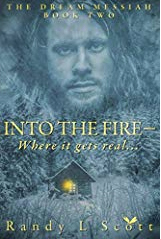
INTO THE FIRE: Jake made more than a few mistakes while trying to raise his infant son. The last incident earned him a seat in the back of a state trooper’s car. Jake’s prayers for a normal life are crushed as his incarceration turns from bad to worse. A crime boss’s story of torture and disfigurement cements Jake’s path of survival by the rules of ruthlessness.
Jakes crazy seeds are sprouting thick as mushrooms on a cow pie. Death follows him like dark cyclone clouds of a voodoo curse.
The woman Jake falls for may be his undoing.
At the crossroads, Jake must decide if he can commit an act utterly heinous and abhorrent–if it will buy his freedom, or is freedom just another word–for nothing left…
AWAKENING: Jake Barnes wasn’t sure if he was bargaining with an angel or the devil when he struck a deal with the powerful Mr. Stevenson. Nine people are now dead in the wake of Jake’s actions.
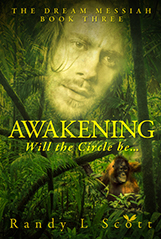
Jake has completed his part of the bargain as Mr. Stevenson’s Hammer of God: as the old Jake Barnes dies and he takes on a new identity as Gabriel G. He’s learned the hard lessons, and the rewards of ruthlessness.
Still not sure if he’s psychotic or being guided by mysterious forces, Gabe escapes to Bali for a meet-up with another character from his past. Together they trek the uncharted territory of Borneo in search of the Punan Dyaks and the truth behind the Dream Messiah. Who will be their savior? How many more will die in this quest? Will the circle be…
Randy L. Scott lives and works in Nevada City, CA.
Resources:
Independent Author – More manuscript editing articles
Little Mountain Publishing – Helpful tools & resources for every stage of writing, editing, and publishing
Pinterest – Editing Tools board
Sierra Writers Conference 2019 & Critique Group Guidelines
What Critique Groups do for Your Writing Life
by Ingrid Keriotis
If we wish to have a creative component in our lives, we should be willing to put our work out there once in a while, for good or bad, and say “Here it is.”
Sierra Writers Guidelines for Starting a Critique Group
- Decide what you want. What kind of writing do you do regularly? Do you write blog posts, correspondence, grant proposals, or social media narratives? What are your writing goals?
- Look for interested people. Network at a Sierra Writers Conference, ask at the Madelyn Helling Library, and study group guidelines on SierraWriters.org.
- Talk to other writers who attend a critique group. Better yet, attend an existing group to get a sense of how it is structured.
- Start small. Establish ground rules before inviting new members.
Creating a Fun Facts Page for your Media Kit
Can you recite the alphabet backward? Have you bungee jumped over the Rio Grande, eaten insects, or dressed in a chicken suit?

Fun Facts open playful gateway connections with your audience.
The factoids you share should blend with your writing subject. The academician or nonfiction author wishing to book speaking engagements might choose conference opening style ice-breakers. A Wattpad anime writer might choose topics relating to video games, demons, or angels.

Your Fun Facts page should be separate from the other professional pieces in your Media Kit. Candid, casual photos can be included.
YouTubers, bloggers, talk show hosts, radio, or podcast interviewers will value the ready-made conversation openers. Readers and fans contacting you through your website will also appreciate the friendly effort.

Examples of Famous People Fun Facts
- As a child, James Earl Jones had a stutter. Embarrassed, he barely spoke for eight years.
- Before his fame, JRR Tolkien worked a dictionary etymologist. An etymologist studies the history of words, their origins, and how their form and meaning changes over time.
- Nicholas Cage had a pet octopus.
- Irish novelist James Joyce was an agoraphobic. Astrophobia is an intense fear of thunder and lightning. Biographers speculate that Catholic teachers ignited the fear by telling him they were signs of God’s fury.
- Philip K. Dick has become a robot (created by Hanson Robotics).
- Jules Verne was shot in the shin by his nephew, Gaston in 1886. As a result, Verne walked with a limp for the rest of his life and Gaston was committed to an insane asylum.
- David Bowie had a permanently dilated left eye. When he was fifteen, he got in a fight over a girl.
- Mel Blanc, the voice actor for Bugs Bunny was in a serious car accident leaving him in a coma. After unsuccessful attempts to rouse him, the doctor asked, “Bugs can you hear me?” Blanc answered, “What’s up, Doc?” By speaking to his characters, the doctor was able to communicate with him until he came out of the coma.
- George Eliot was the male pen name for Mary Ann Evans. Her titles include; Middlemarch, The Mill on the Floss, and Silas Marner.
- A balding Sean Connery wore a hairpiece when filming his Bond movies.
- George Clooney is a half-first cousin five times removed from President Abraham Lincoln.
- Martin Luther King, a Star Trek fan, convinced actress Nichelle Nichol (Lt. Nyota Uhura) to remain on the show when she thought about working on Broadway in 1966.
- Jimi Hendrix and Vangelis, Chariots of Fire and Blade Runner composer, could not read music.
While creating pieces for your Media Kit may feel like having a root canal. Generating a Fun Fact page …is FUN! If you get stuck, ask your friends and family to help. If you have an online community, and you’re brave, ask them to join in too!
Additional reading;
Books on the wall – 150 Interesting Facts About Our Famous Authors (Infographic)
Books on the wall – 150 Interesting Facts About Our Famous Authors (Infographic)
Interesting Literature – 100 Interesting Facts about Famous Authors
Reader’s Digest – Fun Facts about Famous Authors
Reader’s Digest – Fun Facts about Famous Authors
If you liked this post, you might also like 100 Unusual Interview Questions.
News Release Blank Form
Need a fill-in form for a news release? Look no further. Copy and paste the text below. Fill in your own information and you’re ready to make news.
________
FOR IMMEDIATE RELEASE
Title
City, State
Month, Day, Year
Body text, Lorem ipsum dolor sit amet, consectetur adipiscing elit, sed do eiusmod tempor incididunt ut labore et dolore magna aliqua. Vitae ultricies leo integer malesuada nunc vel risus commodo. Eu augue ut lectus arcu bibendum. Elit sed vulputate mi sit amet. Fusce id velit ut tortor pretium. Nibh nisl condimentum id venenatis a. Ut lectus arcu bibendum at varius vel pharetra. Arcu cursus vitae congue mauris rhoncus aenean vel elit scelerisque. Auctor augue mauris augue neque. Ac tortor vitae purus faucibus.
Eu turpis egestas pretium aenean pharetra magna. Quisque egestas diam in arcu cursus euismod. Pharetra massa massa ultricies mi quis hendrerit dolor. Dictum varius duis at consectetur lorem donec massa sapien faucibus. Fusce ut placerat orci nulla. Id cursus metus aliquam eleifend mi. Accumsan lacus vel facilisis volutpat est velit egestas dui. Id nibh tortor id aliquet lectus proin nibh. Malesuada fames ac turpis egestas integer eget aliquet nibh. Elementum nisi quis eleifend quam adipiscing. Suspendisse faucibus interdum posuere lorem ipsum dolor sit. Risus pretium quam vulputate dignissim suspendisse in est. Id porta nibh venenatis cras sed felis. Porta lorem mollis aliquam ut porttitor leo a diam sollicitudin. Ac felis donec et odio pellentesque diam volutpat commodo. Eu nisl nunc mi ipsum faucibus vitae aliquet. Porttitor rhoncus dolor purus non.
Company Name
Contact: Name
snail mail
Phone number (s)
###
Word count
________
Here’s the same information, downloadable in docx, and pdf.
If you liked this post, you may also like 6 Elements of a News Release.
Seedling Cultivation during 2018 Open Studios Tour – Nevada County Language Arts
Nevada County student writers shine in the Seedlings chapbook. Seedlings is a Sierra Writers publication featuring winning entries from the 2018 Young Writers Competition (YWC).
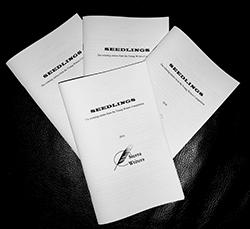 On the first weekend of the Fall Colors Open Studios Tour, studio #30 (off Newtown & Discovery Roads) will feature the chapbook. “Seedlings will help area teachers prepare students for the 2019 competition and give tour attendees a chance to appreciate the young literary talent growing in the community,” says Lisa Redfern.
On the first weekend of the Fall Colors Open Studios Tour, studio #30 (off Newtown & Discovery Roads) will feature the chapbook. “Seedlings will help area teachers prepare students for the 2019 competition and give tour attendees a chance to appreciate the young literary talent growing in the community,” says Lisa Redfern.
Redfern is a Deer Creek artist and member of Sierra Writers. In addition to showcasing YWC student writing, she will be displaying her own literary art (personal monsters) as well as her Life on the Creek series.
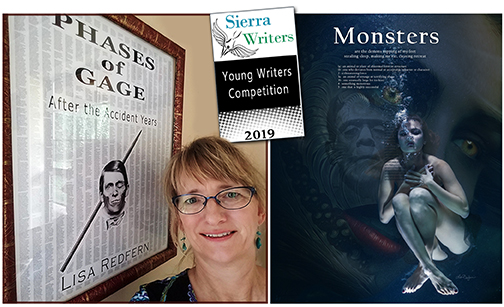
Students have five months to compose and polish prose for a chance to win cash awards and publication in the 2019 Seedlings chapbook. Prizes range from $100 to $25 depending on the grade of the entrant.
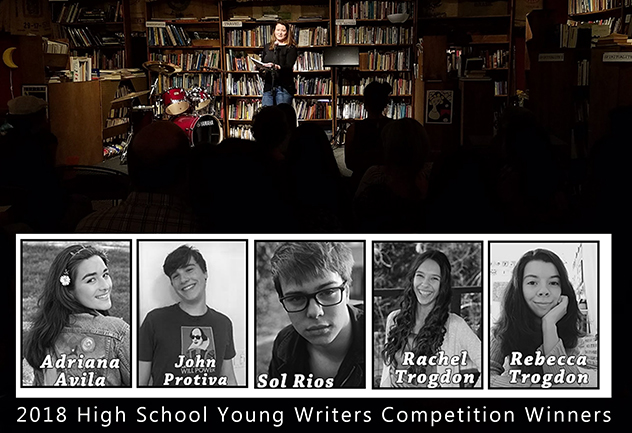
Support for the YWC is generated through Sierra Writers membership dues, donations collected at monthly meetings, book exchange and literary events. Chapbook printing and production is funded through program sponsorships.
Nevada County middle and high school Language Arts teachers are encouraged to attend the tour to pick up competition guidelines and winning entry samples.
From 10 a.m. – 5 p.m. on both days, Lisa will be available to share information and answer questions about the Young Writers Competition and sponsorship opportunities.
Websites
SierraWriters.org – 2019 Young Writers Competition (YWC)
FollowingDeerCreek.com – a story-based study of the Deer Creek Watershed
LittleMountainPublishing.biz – Redfern’s books & short stories
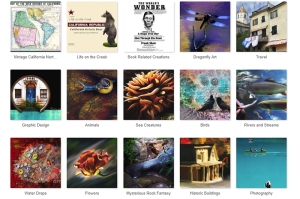
Gold Rush Stories; 49 Tales of Seekers, Scoundrels, Loss and Luck – Book Review
 Gold Rush Stories by Gary Noy
Gold Rush Stories by Gary Noy
From the extinction of California’s Grizzly Bear, environmental destruction, and racist atrocities to situations engendering multi-cultural cooperation, Gary Noy links California’s haunting past to contemporary issues still playing out today.
Click here to read the full review and watch a video – https://bit.ly/2Jo4aML


